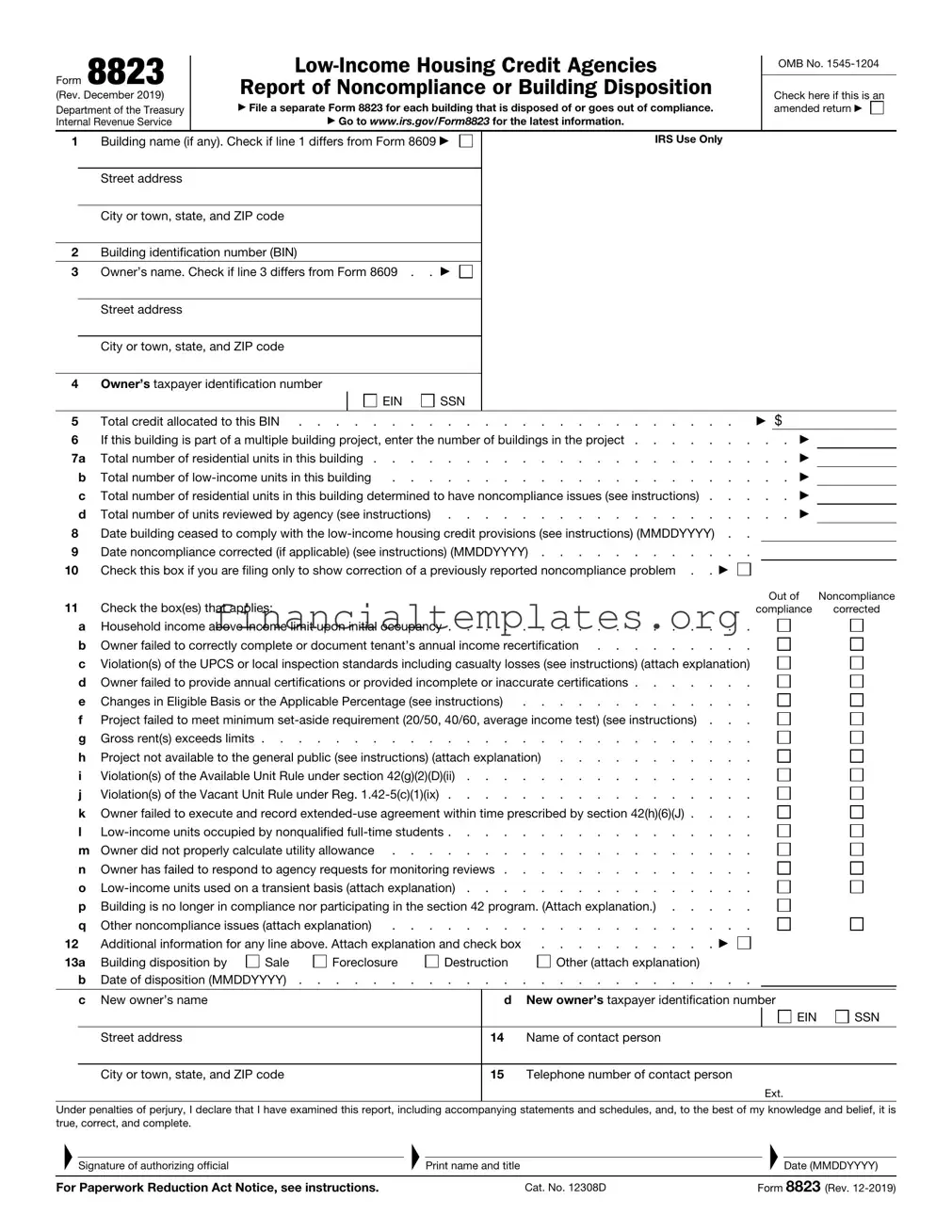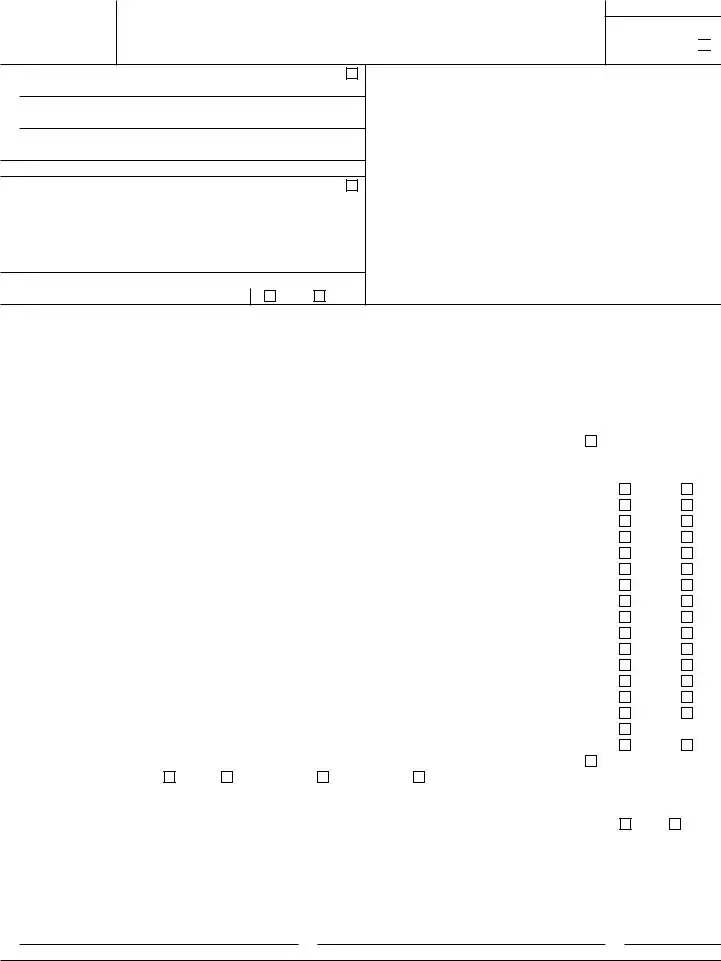The IRS Form 8609, "Low-Income Housing Credit Allocation and Certification," serves a complementary role to Form 8823 in the administration of the Low-Income Housing Tax Credit (LIHTC) program. Form 8609 is issued to property owners as an official allocation of the LIHTC, providing essential information such as the amount of the tax credit allocated to the building and the first year of the credit period. Both forms are integral to monitoring and ensuring compliance with the LIHTC program's requirements, with Form 8823 specifically used to report instances of noncompliance or building disposition that could affect the allocated credit.
Form 1099-MISC, "Miscellaneous Income," is akin to Form 8823 in that it serves a reporting function, but for different types of transactions. While Form 8823 reports noncompliance or disposition within the LIHTC program, Form 1099-MISC is used by businesses to report payments made in the course of a trade or business to others, such as rents or royalties. Both forms are critical to the IRS's ability to collect accurate information on financial transactions relevant to taxation.
IRS Form 4562, "Depreciation and Amortization," shares similarities with Form 8823 in its reporting function, specifically in the context of investment in property. Form 4562 is used by taxpayers to claim depreciation on property, which is significant for properties within the LIHTC program as it affects the property's eligible basis and, consequently, the amount of tax credit available. In this way, both forms interact with the tax implications of property investment and management.
Form 5472, "Information Return of a 25% Foreign-Owned U.S. Corporation or a Foreign Corporation Engaged in a U.S. Trade or Business," is related to Form 8823 through its role in reporting transactions that have tax implications. Though Form 5472 focuses on transactions between a U.S. corporation and its foreign owners, and Form 8823 deals with compliance in affordable housing, both forms are essential to the IRS's enforcement of tax laws and regulations across different contexts.
The HUD-1 Settlement Statement, used in real estate transactions, parallels Form 8823's function of providing detailed information on transactions, but in the realm of buying and selling real estate. The HUD-1 outlines the financial transactions involved in real estate closings. Similar to Form 8823, which reports specific compliance-related details of the LIHTC properties, both documents serve to ensure transparency and adherence to regulatory requirements.
Form 926, "Return by a U.S. Transferor of Property to a Foreign Corporation," is analogous to Form 8823 in that it documents specific transactions impacting tax responsibilities. Form 926 is filed when a U.S. person transfers property to a foreign corporation, capturing information critical for determining tax liabilities. Like Form 8823, which records noncompliance affecting tax credits for affordable housing, both forms aid in maintaining lawful and transparent reporting for tax purposes.
IRS Form 3115, "Application for Change in Accounting Method," intersects with Form 8823 in its role in ensuring accurate tax reporting. Form 3115 is utilized when a taxpayer needs to make a change in their accounting method, which could have implications for income recognition or deduction timing. Though its focus differs from Form 8823's compliance reporting in the LIHTC program, both forms are crucial for reflecting changes that impact tax calculations and compliance.
Form 8283, "Noncash Charitable Contributions," serves a purpose similar to Form 8823 by documenting specific information relevant to tax deductions, though for charitable contributions rather than LIHTC compliance. Taxpayers use Form 8283 to report non-cash donations over certain thresholds, which impacts their deductible amounts. Both forms require detailed reporting to substantiate claims made on tax returns, enhancing transparency and compliance with tax regulations.
Lastly, the IRS Form 7004, "Application for Automatic Extension of Time to File Certain Business Income Tax, Information, and Other Returns," shares a procedural similarity with Form 8823 as both involve the submission of information to the IRS under specific conditions. Form 7004 is used to request extensions for filing various business-related tax returns, aligning with Form 8823's role in ensuring timely reporting of compliance or disposition issues within the LIHTC program. Each form facilitates adherence to tax filing deadlines and requirements, though serving distinct functions within the tax code framework.




